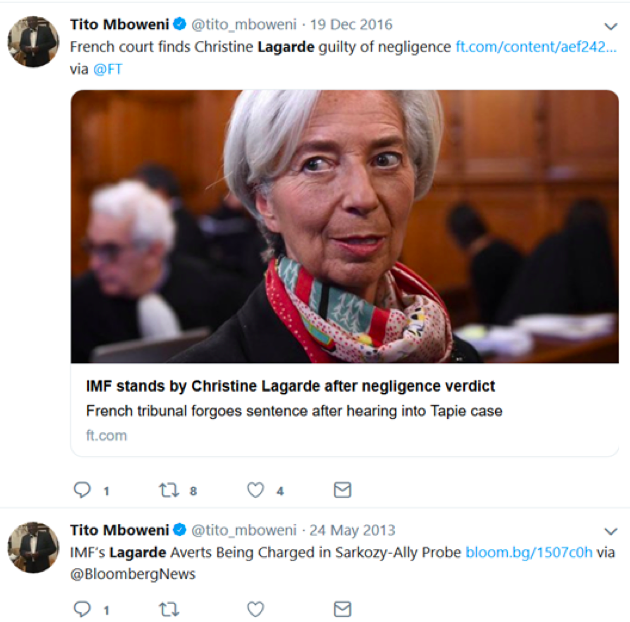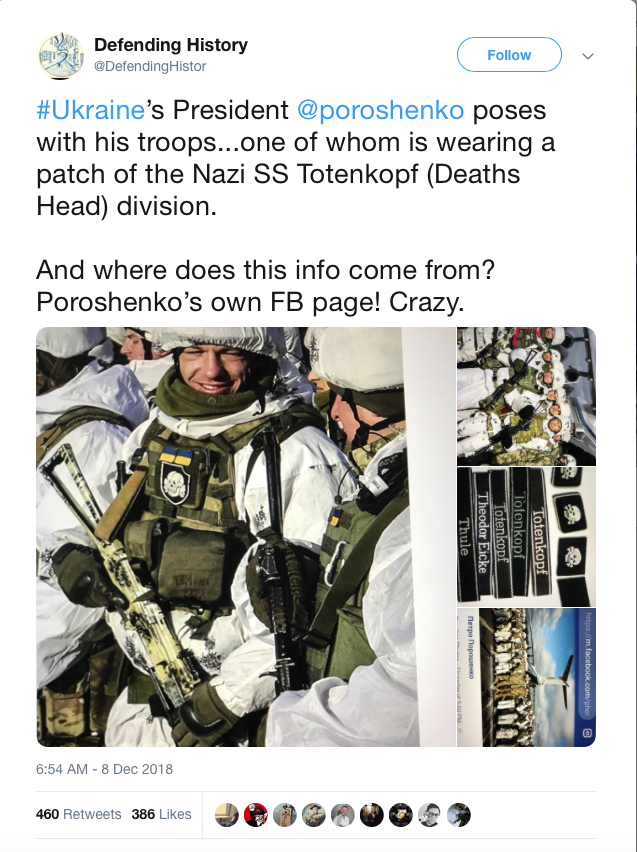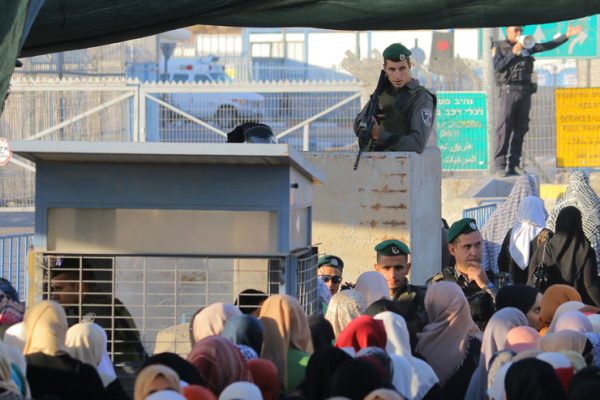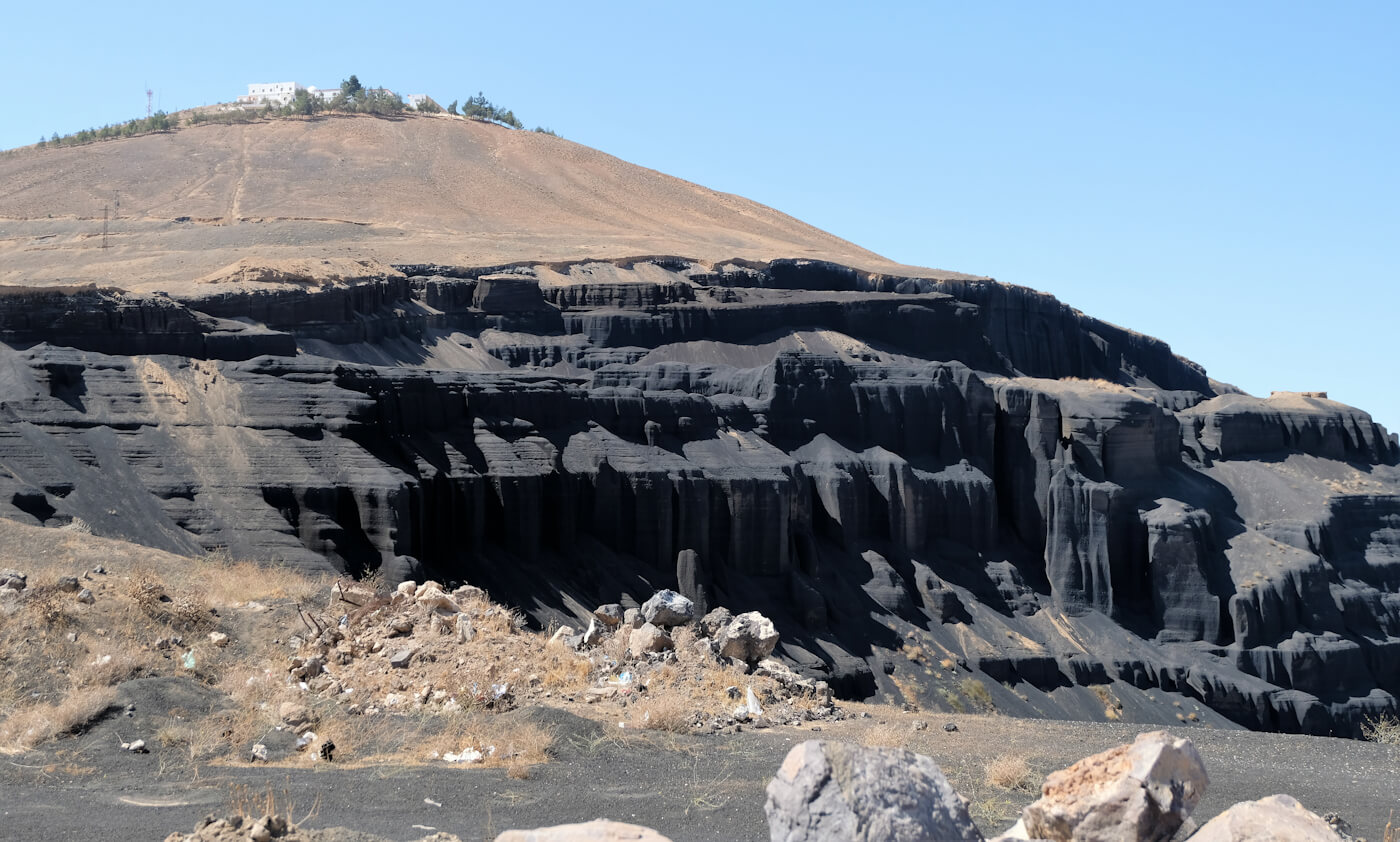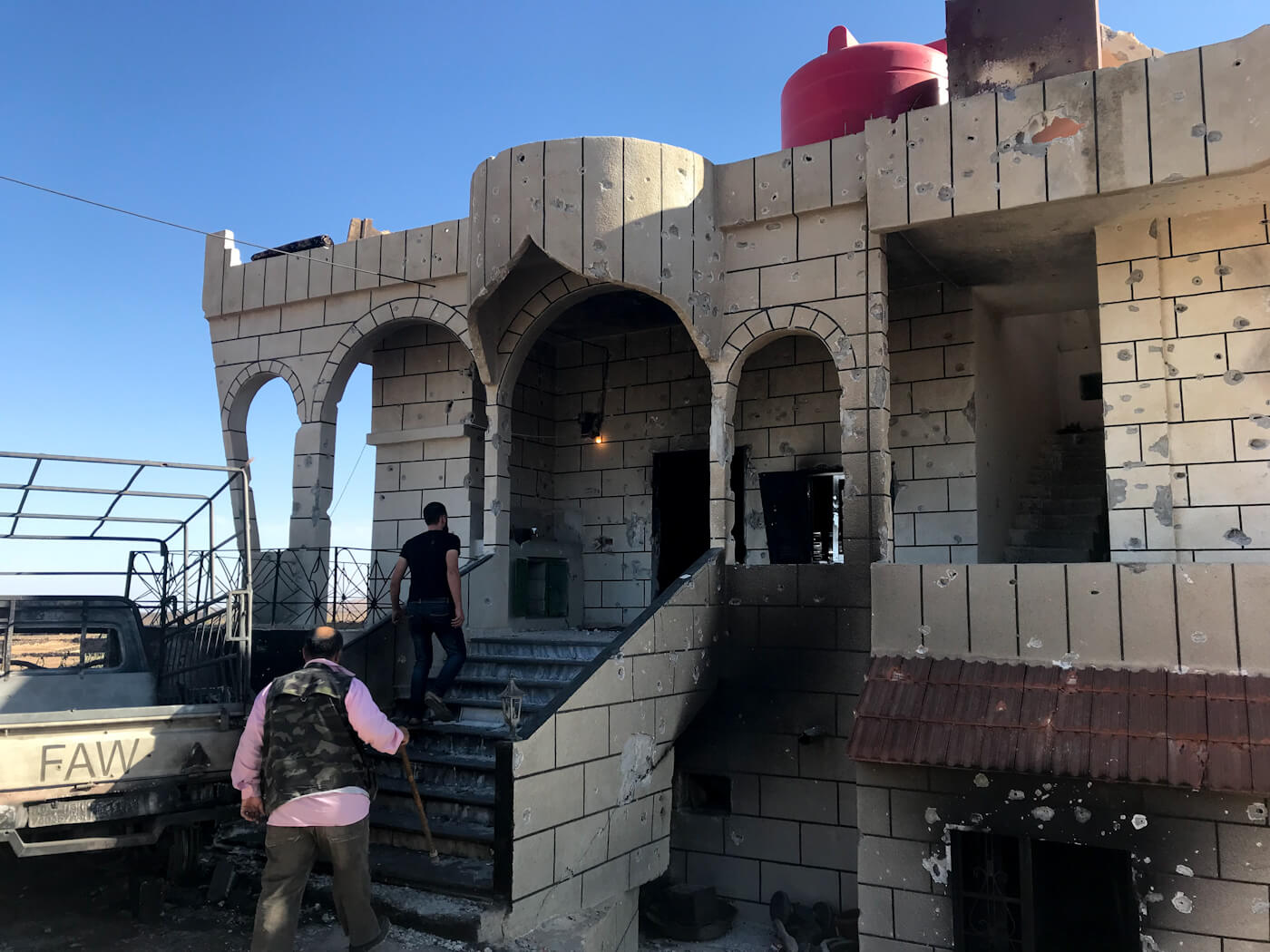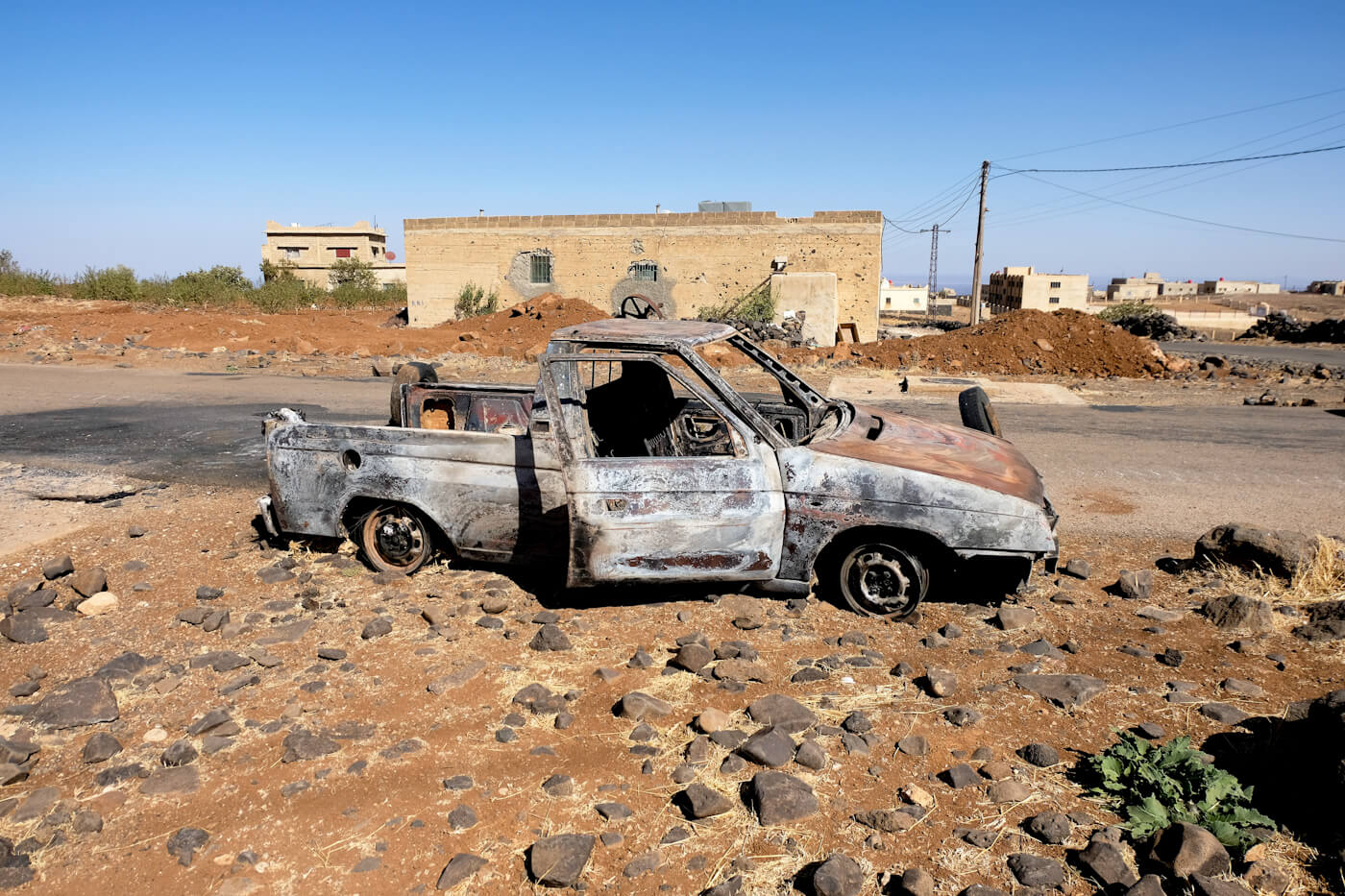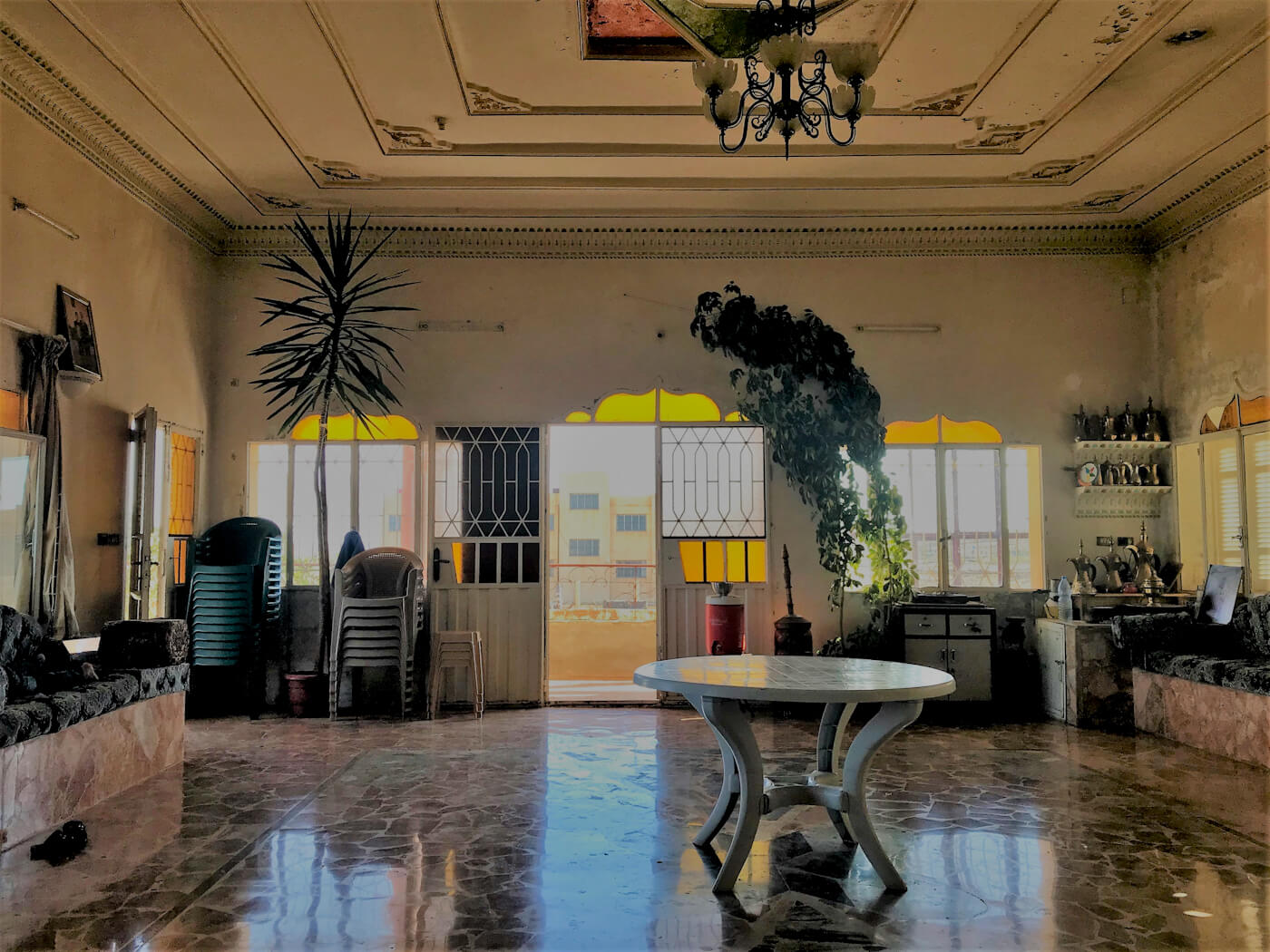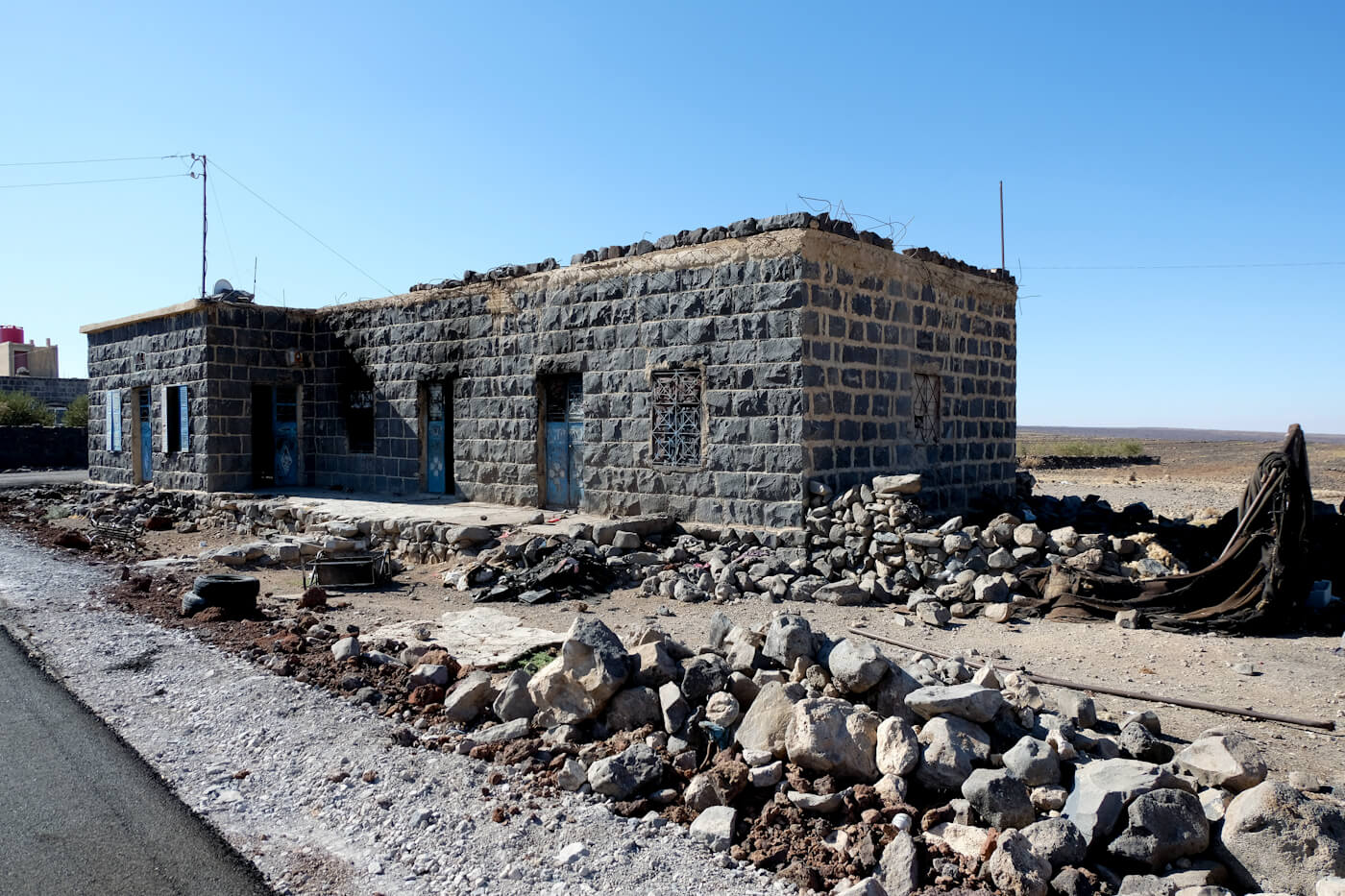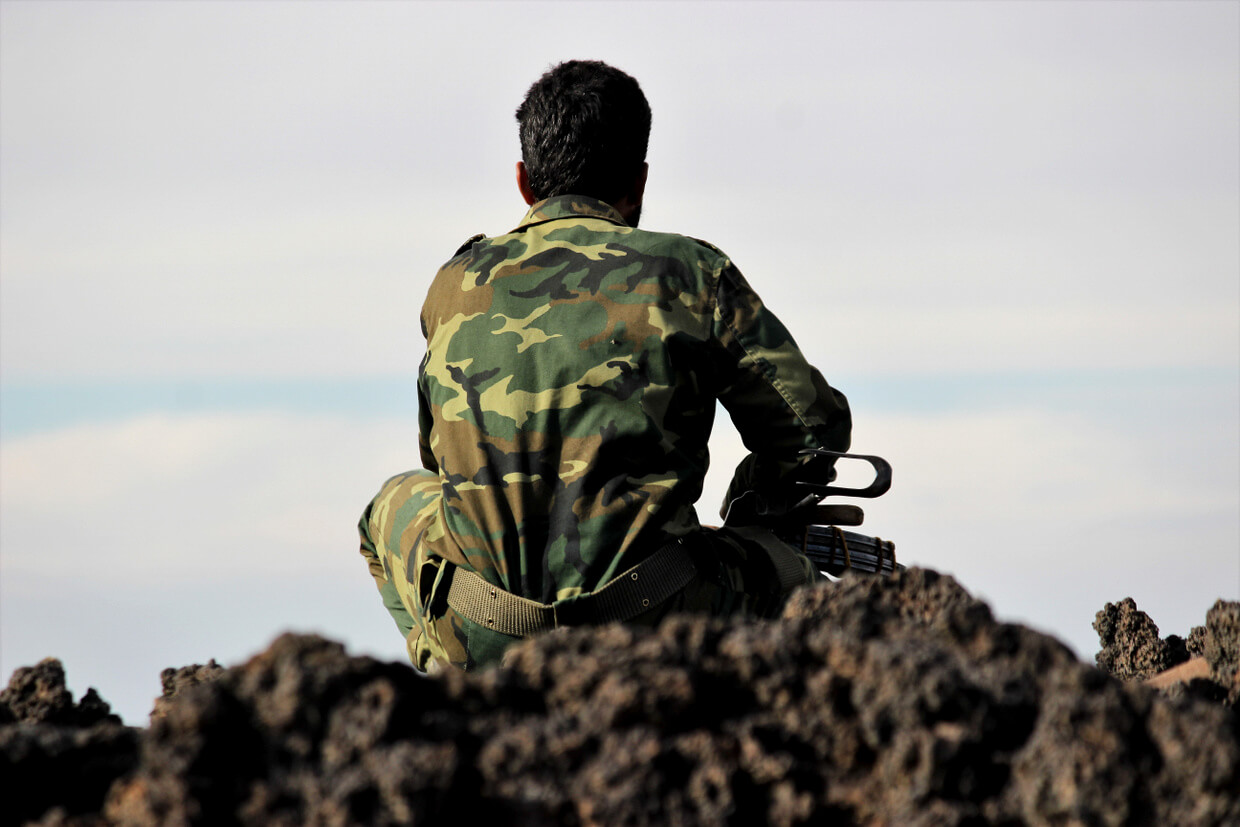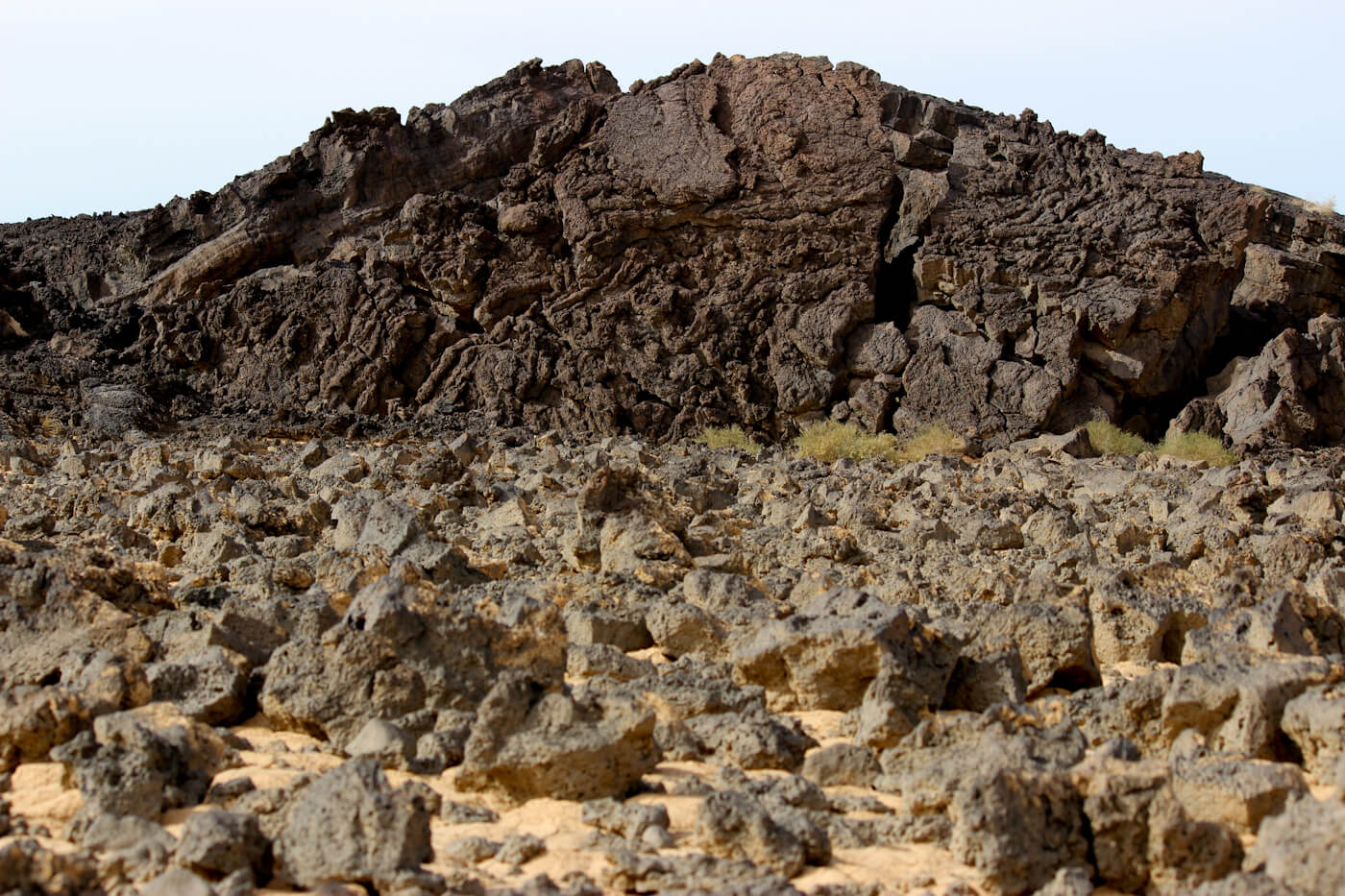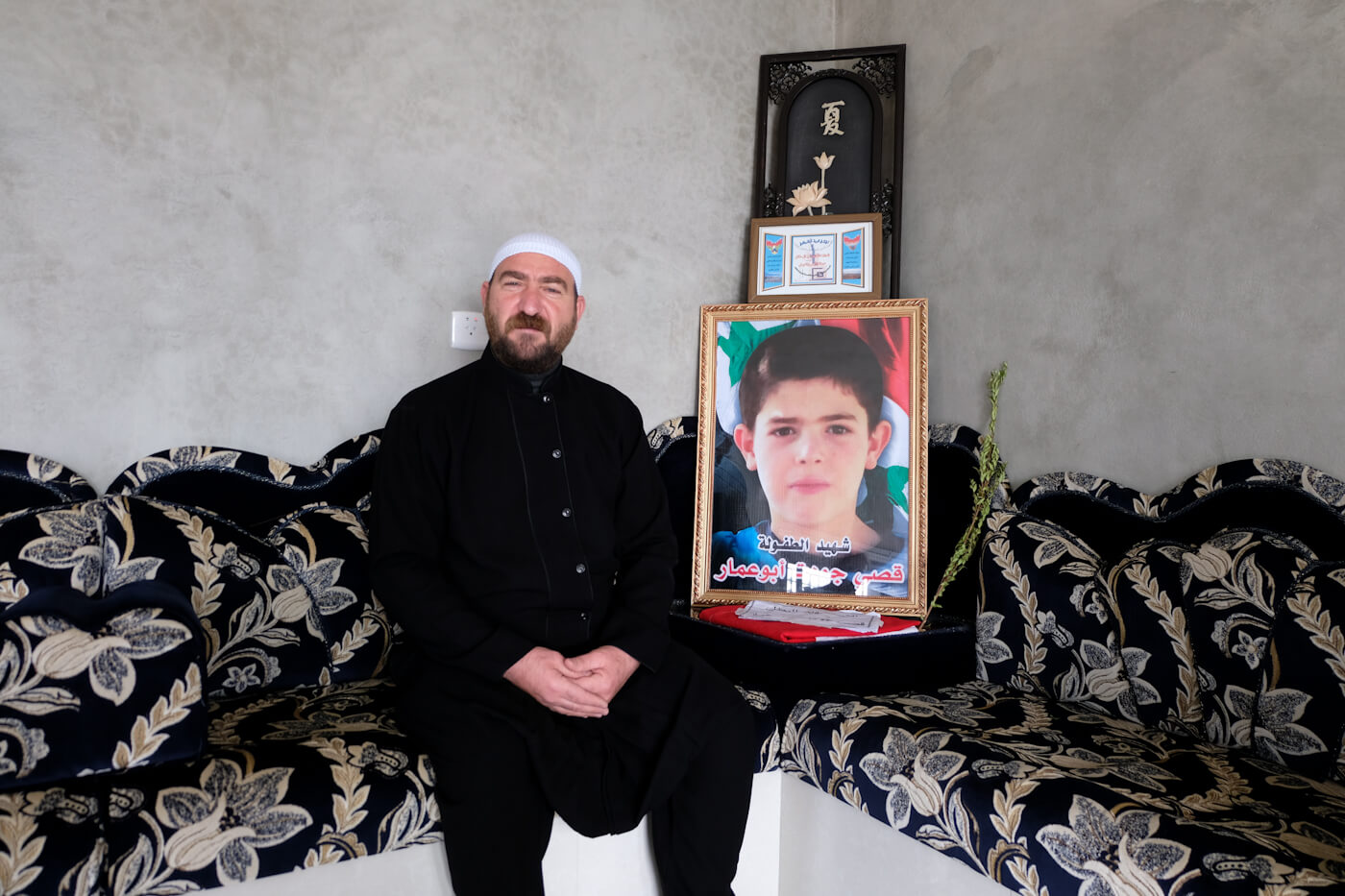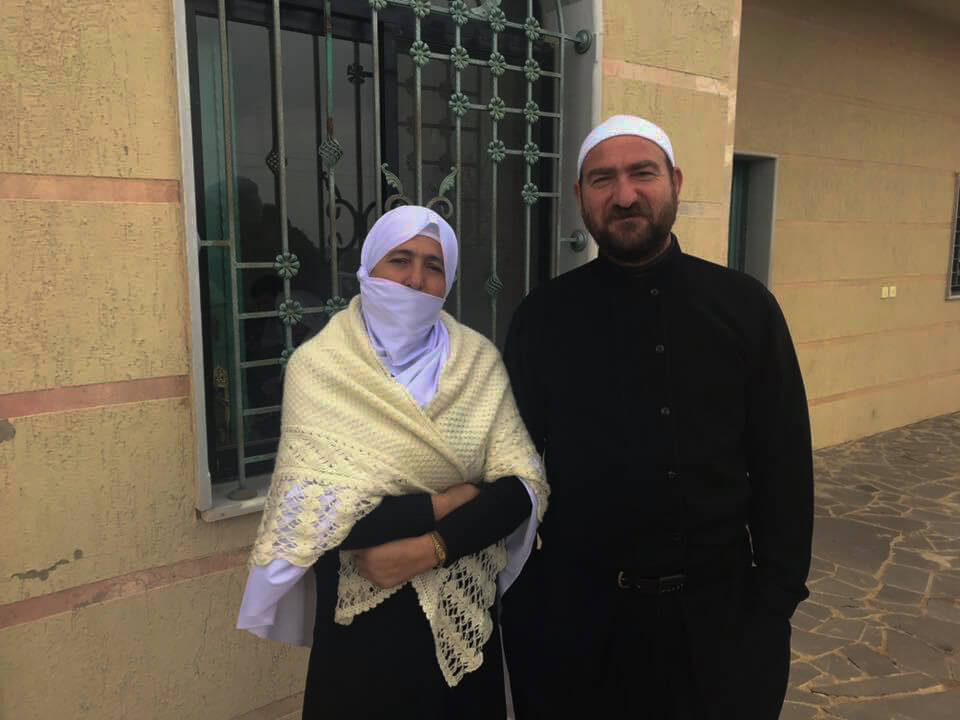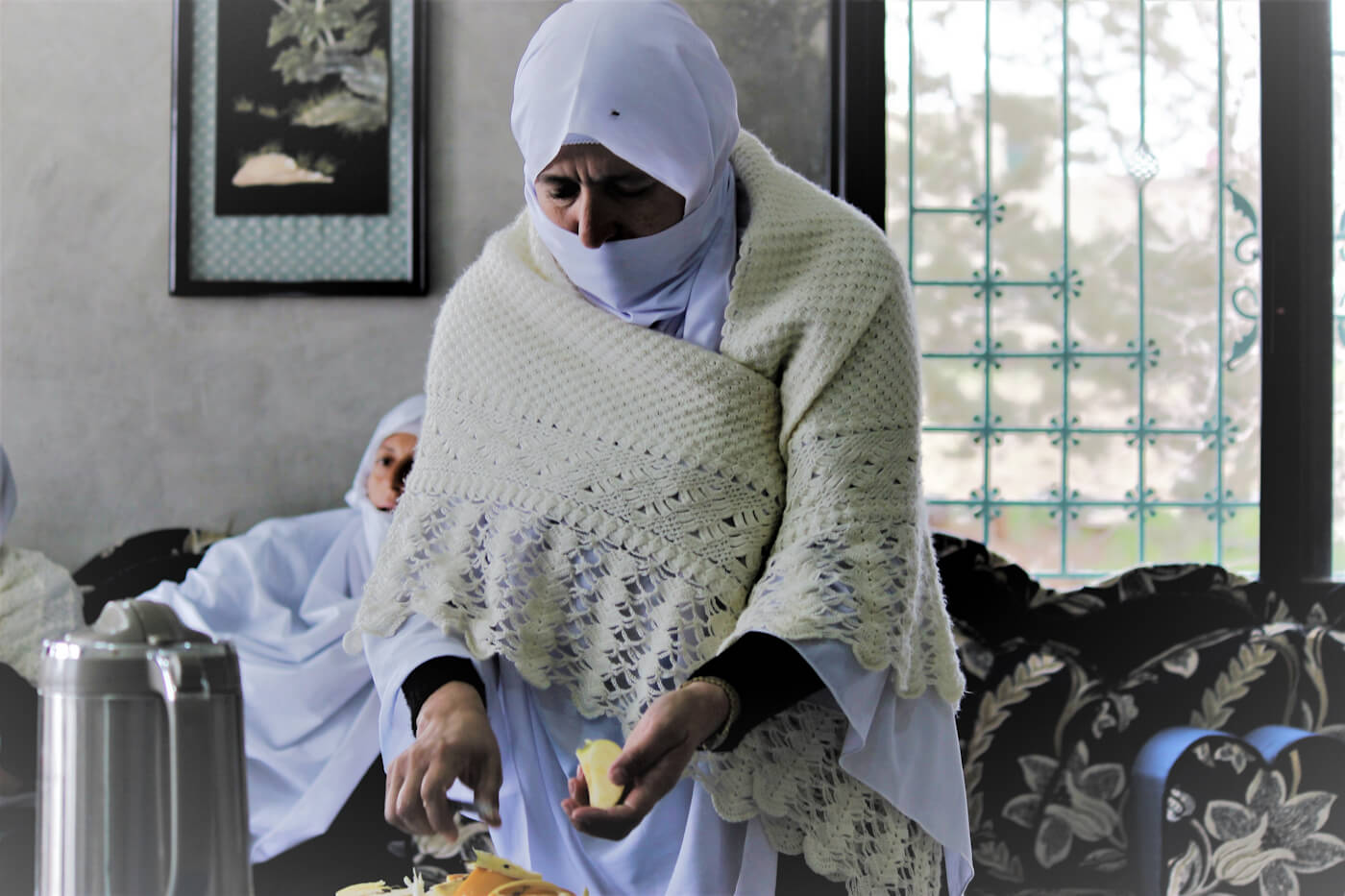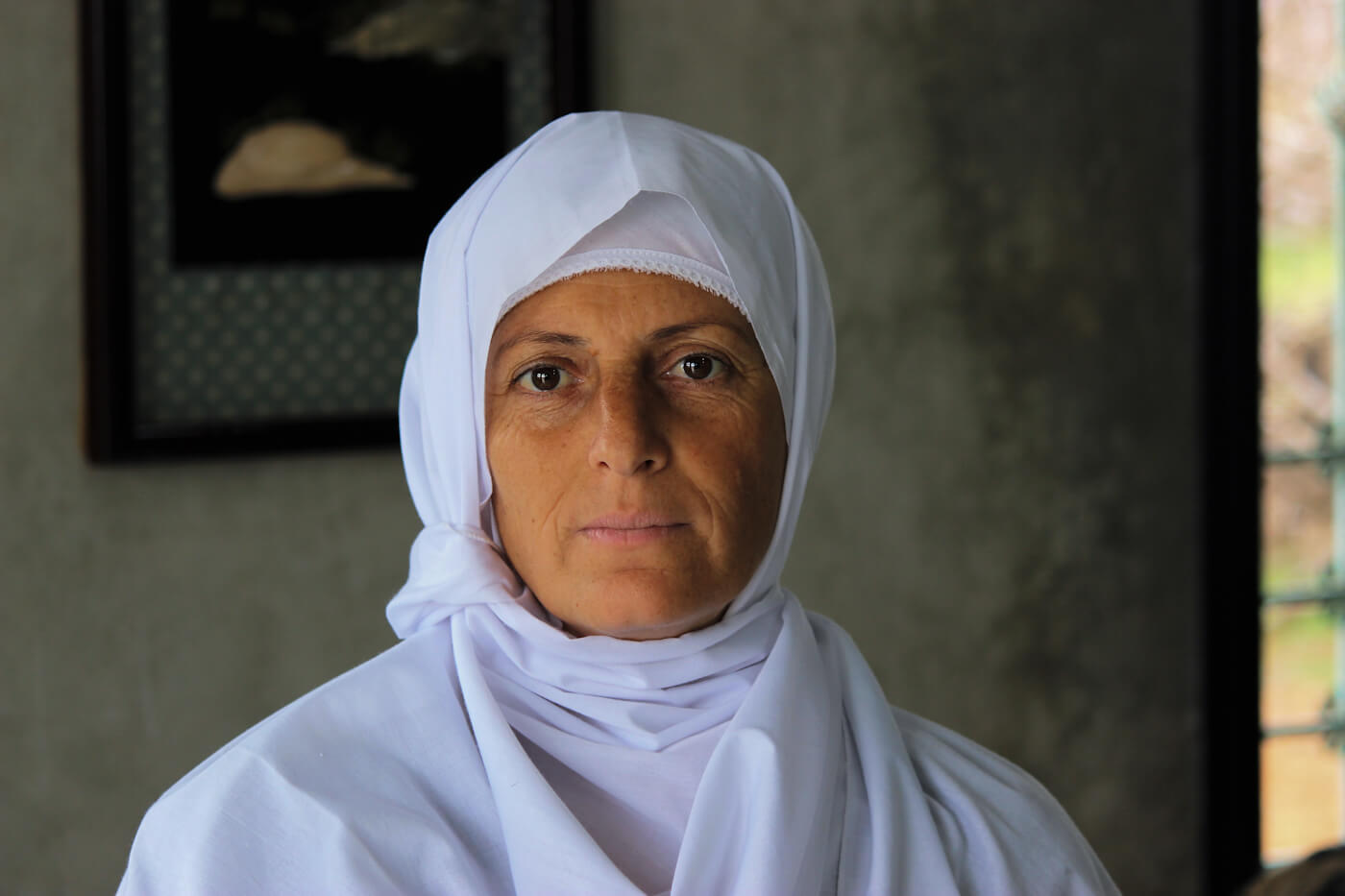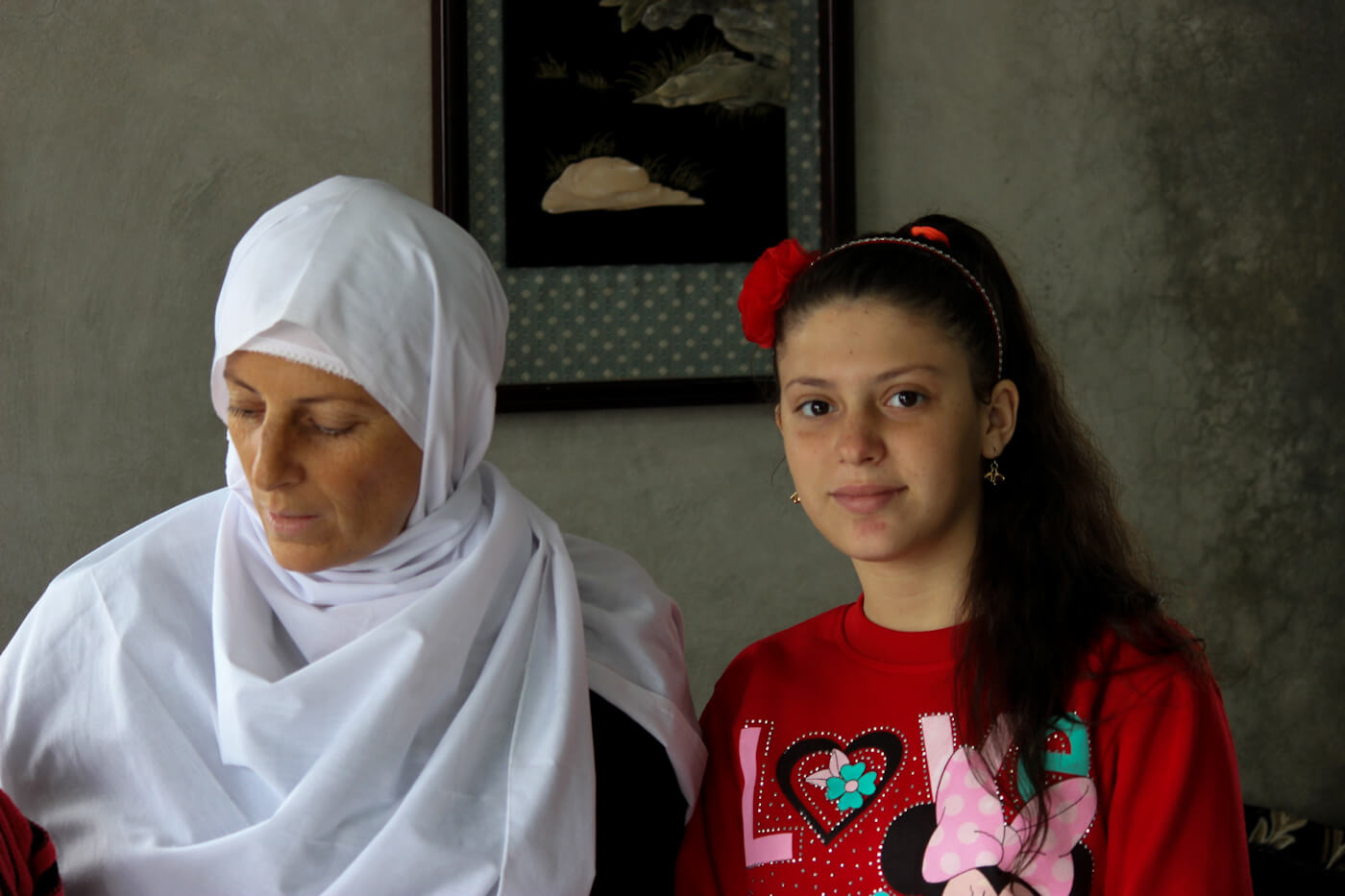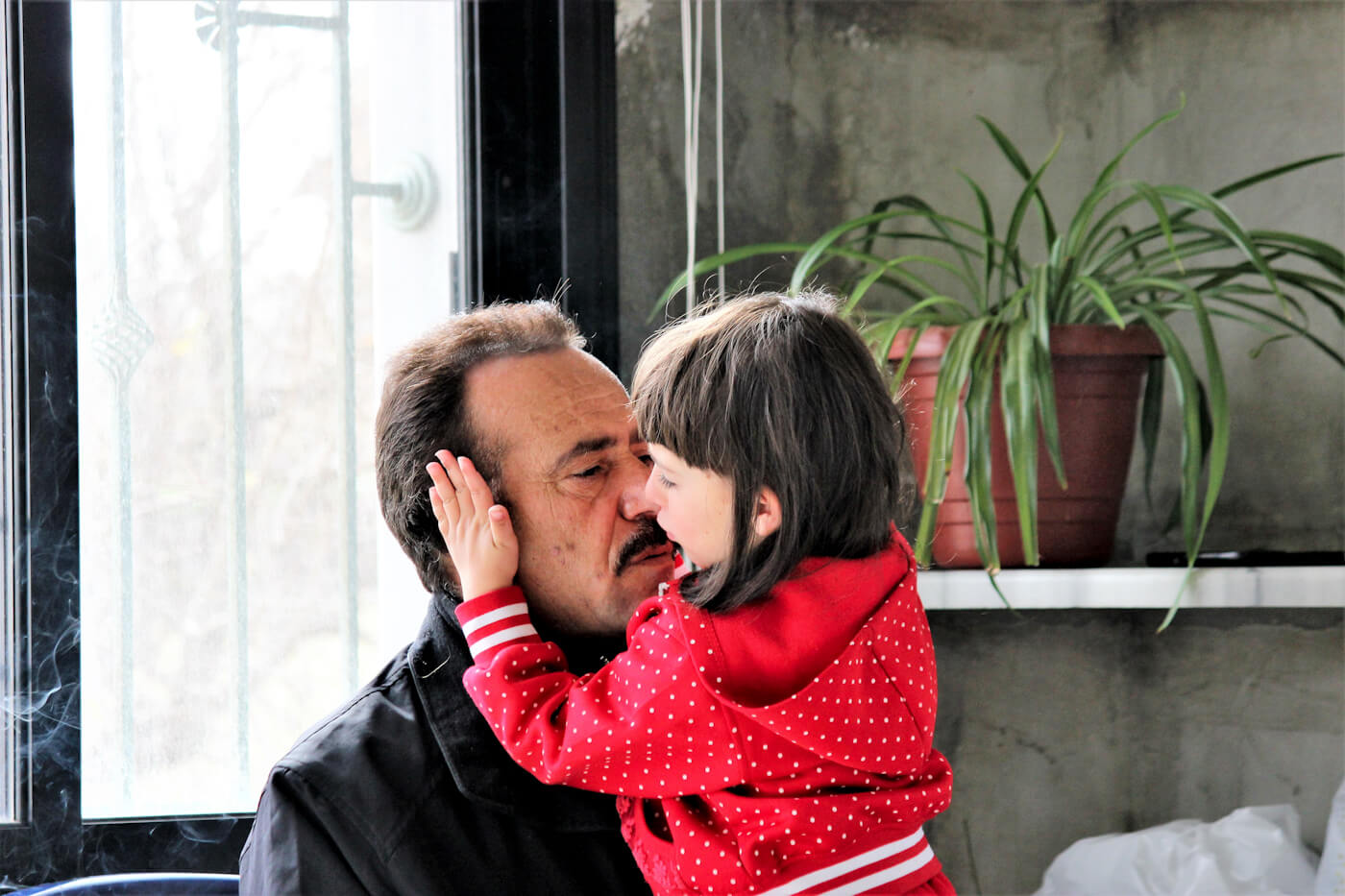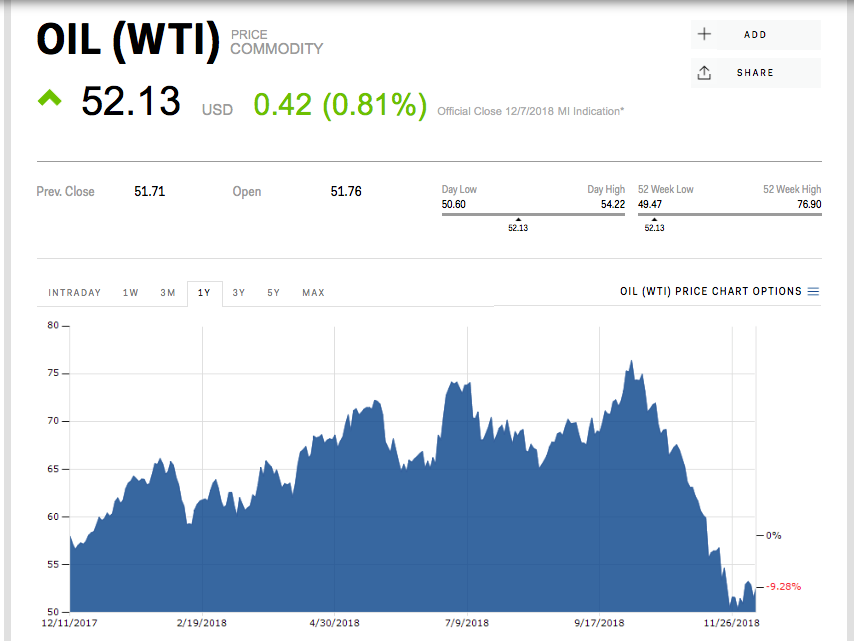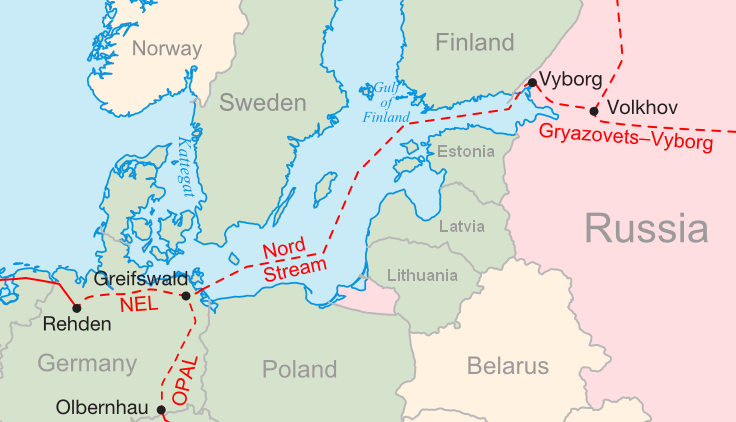The whole focus of classical economics is to tax wealth not income, and obviously, the tax burden was going to fall on the wealthy, on the landlords first and foremost, then on the bankers and then on the monopolists. That was what socialism was, the idea of creating an economy with a circular flow that the taxes would be paid by the wealthy and the government would use this tax revenue to spend on infrastructure, schools, productive credit to help the economy and to make economies more competitive. It seems that in that sense socialism was going to be the most efficient capitalist economy.
I’m Bonnie Faulkner. Today on Guns and Butter, Dr. Michael Hudson. Today’s show: The Vocabulary of Economic Deception. Dr. Hudson is a financial economist and historian. He is President of the Institute for the Study of Long-Term Economic Trend, a Wall Street financial analyst and distinguished Research Professor of Economics at the University of Missouri, Kansas City. His 1972 book Super-Imperialism: The Economic Strategy of American Empireis a critique of how the United States exploited foreign economies through the IMF and World Bank. His latest books are, Killing the Host: How Financial Parasites and Debt Destroy the Global Economyand J Is for Junk Economics – A Guide to Reality in an Age of Deception. Today we discuss J is for Junk Economics, an A to Z guide that describes how the world economy really works, and who the winners and losers really are. We cover contemporary terms that are misleading or poorly understood, as well as many important concepts that have been abandoned – many on purpose – from the long history of political economy.
***
BONNIE FAULKNER:Dr. Michael Hudson, welcome to Guns and Butter again.
MICHAEL HUDSON:Well, it’s good to be back, Bonnie.
BONNIE FAULKNER:You write that your newest book, J Is for Junk Economics, a dictionary and accompanying essays,was drafted more than a decade ago for a book to have been entitledThe Fictitious Economy. You tried several times without success to find a publisher. Why wouldn’t publishers at the time take on your new book?
MICHAEL HUDSON:Most publishers like to do books that are like the last book that sold well. Ten years ago people thought that the economically was doing just fine, and I was looked at as a kind of Dr. Doom, which did very well for me in the 1970s when I was talking about where the economy was going. But they wanted upbeat books, and they wanted, really, if I’m going to talk about the fact that the economy’s polarizing and getting poorer, how you can make a million dollars as the economy gets poorer people get more strapped and the economy polarizes. I didn’t want to write a book about how to get rich by riding the Republican or neoliberal dismantling of the economy. If I wanted to do that, I would have stayed on Wall Street as a Wall Street analyst.
I wanted to explain how the way in which the economy was getting rich was actually impoverishing it, and what seems to be getting better and better was really masked by the words that were used by the media, by television, by The New York Times. They were euphemizing all of what was happening.
In other words, a euphemism is something to make a bad trend look good. So if a landlord gets rich by exploiting the tenants and forcing them all out, that’s called wealth creation. Or if you can distract people to celebrate wealth and splendor at the top of the economic pyramid then they’re going to not be so aware of the bottom 99% and how things are doing below the top 1%.
BONNIE FAULKNER: Could you describe the format of J Is for Junk Economics – A Guide to Reality in an Age of Deceptionas an A-to-Z dictionary with additional essays? It seems to me that this format makes a good reference book that can be picked up and read at any point.
MICHAEL HUDSON: That’s exactly what I intended it to be. I had written the companion volume basically as an outline of my economic theory, Killing the Host, which was how the financial sector was taking over the economy in a parasitic way. But I think that I saw with the vocabulary that if people have a basically clear set of economic concepts, basically those of classical economics – value, price, rent – and a basic knowledge of what the leading economists said and just the words, that the words would almost organize themselves into a worldview. A correct vocabulary and understanding of what the words meant would sort of imply, gradually you put it all together and they all form an inter-connected system.
At the same time, I wanted to show how junk economics uses euphemisms and what Orwell called doublethink to confuse people about the economy. I found in academia that the role of most what’s called think tanks, which are really lobbying institutions, is to do what advertisers for toothpaste companies and consumer product companies do: They try to present images that are meant to portray their product, in this case neoliberal economics, dismantling of protection of the environment, dismantling of consumer protection, stopping of prosecution of financial fraud, all of this is wealth creation instead of impoverishment for the economy at large. So basically, this book reviews the whole economic vocabulary and the language that people use to describe the reality.
Sixty years ago, when I was in college, at that time they were still teaching the linguistic ideas of Benjamin Lee Whorf. Whorf’s idea was that people’s language affects how they perceive reality, and different cultures and different linguistic groups have different modes of expression. I found at that time that if I was going to, say, a concert and speaking German, I would be saying something that was substantially different from if I was speaking English. At that time, there weren’t many English-speaking people that went to hear classical music, at least not on the upper ranks of the orchestra buildings that I could afford seats in.
I realized that, let’s look at the economic vocabulary as propaganda, and if we can understand how the words that you hear are largely propaganda words or where they’ve changed the meaning around to exactly the opposite of what the classical economists meant, then you can untangle the propaganda and you can juxtapose a more functional vocabulary that helps you understand what’s actually happening.
BONNIE FAULKNER:You write that “the terms rentier and usury that played so central a role in past centuries now sound anachronistic and have been replaced with more positive Orwellian doublethink,” which is what you’ve begun to explain. In fact, your book J is for Junk – A Guide to Reality in an Age ofDeceptionis all about the depredation of vocabulary to hide reality, particularlythe state of the economy. Just as history is written by the victors, you point out that economic vocabulary is defined by today’s victors, the rentier financial class. How is this deception accomplished?
MICHAEL HUDSON: Well, it’s accomplished in a number of ways. The first way was to stop teaching the history of economic thought. When I went to school – again, 60 years ago – every economics graduate had to study the history of economic thought. You’d get Adam Smith, Ricardo and John Stuart Mill, Marx, Dublin, and their analysis was they had a common denominator. This common denominator was to focus on society’s unearned income, which they called rent. They wanted to say there’s a distinction between productive work and unproductive work. There’s a distinction between wealth and overhead. And the classic analysis was that of the physiocrats and David Ricardo, of landlords, saying, look, the landlord class inherits its wealth from ancestors who conquered the land by military force, and the landlords extract rent but they don’t do anything at all to create a product. They don’t do anything at all to create output. The same with other recipients of rent. And the word that was used through the 19thcentury was rentier. It’s a French word, and the word rent in French meant the income from a government bond. It was a coupon clipper. It was interest.
So the classical economists all had in common a description of rent and interest as something that a real free market would get rid of. To Adam Smith and John Stuart Mill down to Marx and the socialists, a free market was one that was free of a parasitic overclass that got money without doing any work. They got money by purely exploitative means, by charging rent that didn’t have to be paid, by charging money for interest, by charging money for public services and public utilities that a well-organized government should provide freely to people instead of letting privileged people put up toll booths on roads and toll booths for technology and patent rights and things that just enabled them to extract wealth. So the whole focus of economics up until World War I was the contrast between production and extraction.
Well, ultimately there was an economic fight and the parasites won. The first thing the rentiers, the financial class, the monopolists, the 1% did was to say, “We’ve got to stop teaching the history of economic thought so that people don’t even have an understanding that there is such a thing as economic rent. We have to take the slogan of the socialist reformers,” which was a free market, “and say that a free market is one free from socialism not free from the parasites, not free from landlords, not free from bankers, and not free from monopolists.” So they turned the vocabulary upside down to mean exactly the opposite, and in order to promote this deceptive vocabulary they had to erase all memory of the fact that these words originally meant something just the opposite.
BONNIE FAULKNER:How has economic history been rewritten by redefining the meaning of words? What is an example of this? For instance, what does the word reform mean now as opposed to what reform used to mean?
MICHAEL HUDSON:Well, reform used to mean something that was social democratic. Reform used to mean getting rid of special privileges, getting rid of monopolies, letting labor organize. It meant controlling the prices that monopolies could charge, and it meant regulating the economy to prevent fraud and to prevent exploitation and to prevent unearned income.
Well, today’s neoliberal vocabulary, the Nobel prize reflects the neoliberal economics curriculum, and reform means getting rid of socialism. Reform means stripping away all of labor protection. It means deregulating the economy. It means getting rid of any kind of price controls, getting rid of protections in labor, getting rid of consumer protections, getting rid of environmental protection. It means creating a lawless economy where the 1% are completely in control without any checks and balances at all. So reform today means getting rid of all of the reforms that were promoted in the 19thand early-20thcentury.
BONNIE FAULKNER:What were the real reforms of the progressive era?
MICHAEL HUDSON:Well, you had labor unions, to begin with, to protect labor. You had limitations on the work week and the work day, how much work people could do. There were safety protections. There was protection of the quality of food and consumer goods to prevent dangerous goods. There was the whole New Deal legislation that began to take basic monopolies of public service such as roads, communications systems, out of the hands of monopolists and make them public so that instead of using a road or communications, the phone system, to exploit people by charging whatever the market would bear, you’d provide basic needs at the lowest possible costs or even freely so that the economic would have a low cost of living and a low overhead.
The whole idea of reform was to get rid of socially unnecessary income. The idea was that if landlords were going to get rent for properties that they did nothing to improve but just raise the rents whenever cities built more transportation or more parks or better schools, all this rent would be taxed away.
And initially the income tax was a basic reform in 1913 and 1914. The idea was only 1% of America’s population had to pay an income tax. Most people were tax-free, because the idea was that you wanted to tax the wealthiest 1% or 2%, the people who simply lived off their bond holdings or lived off their stocks or lived off their monopolies or their real estate, and you didn’t want to tax labor and you didn’t want to tax industry, the companies that actually produced something. Well, these reforms made America the most productive, lowest-cost, competitive and also the most equal economy in the entire world.
But gradually this has been undermined more and more, and now, if you’re a monopolist or if you’re a bankster or a financial fraudster or a land speculator, your idea of reform is to get rid of all of these laws that protect consumers, that protect tenants, that protect homebuyers, that protect the public at large, and protect the country’s atmosphere, free air and free water. So if you’re a coal company or an oil company, your idea of reform is to get rid of the Clean Air Act, as the Trump administration has been doing.
The counterpart to junk science is junk economics, to defend all of this idea that a world without any laws at all against the wealthy, that laws are only against the poor, only against consumers, for instance for downloading music or stealing somebody’s patented songs or controls, that the world is turned inside out this way.
BONNIE FAULKNER: According to 19th-century classical economists, what is fictitious capital and why is this distinction no longer made in economics?
MICHAEL HUDSON:That’s a wonderful question. The word fictitious capital is usually associated with Marx, but it actually was used by many people in the 19thcentury. It was even used by right-wing libertarians such as Henry George.
Fictitious capital was the idea that somebody could have wealth in the form of a claim on society that was purely extractive, but it wasn’t a means of production. Real capital was supposed to be a means of production – a factory, machinery, tools, things that were used to produce output. But capital in the form of an ownership privilege like owning a building or land or a patent or a monopoly and charging whatever you could did not add anything to production at all; it was purely extractive.
BONNIE FAULKNER:You say that by the late-19thcentury “reform movements were gaining the upper hand, that nearly everyone saw industrial capitalism evolving into what was widely called socialism.” How would you describe the socialism that classical economists like Mill, Ricardo or Marx envisioned?
MICHAEL HUDSON:Well, they all called themselves socialists and there were many kinds of socialism. The Christians promoted Christian socialism, and they believed that capitalism was a transitory stage of sort of the remnants of feudalism, leaving the wealthy landlord hereditary ruling class in power that was created by military invasions of England, France, Germany, the rest of Europe. And the whole idea was that socialization would run factories and operate land and provide public services for the economy at large to grow instead of imposing austerity and letting the wealthy classes expose the rest of the economy at large.
So socialism, until World War I, was increasingly popular because everybody thought, well, capitalism’s evolving. There’s no such thing as capitalism as such; everything is in motion. What the classical economists that sort of culminated in Marx spelled out was, let’s look at the laws of motion of society. Let’s see where it’s all leading.
And the idea not only of Marx as a socialist but of American business school professors like Simon Patten of the Wharton School said, well, the economy that is going to dominate the world is the economy that is the most efficient in preventing monopoly, in preventing absentee land ownership, in preventing economic rent and in using almost all of its income for wages and profits, not for rent or interest or monopoly rents.
And so the business class itself in the United States, in Germany, even in England was in favor of reform. This all stemmed very largely from the battle that occurred in England after the Napoleonic Wars were over in 1815 when Ricardo, representing the banking class, was arguing against Reverend Malthus, the population theorist, who was also the lobbyist for the landlord class. Malthus was urging agricultural protectionism for the landlords so that they would get more and more rent from their land as prices were high, and Ricardo represented the banks and said, look, if you have high food prices in order to generate more rents for the agricultural landlords, then you’re going to have high labor costs, and if you have high labor costs then England cannot be the industrial workshop of the world. In order for England to become the industrial supreme power, we have to overcome the landlord class. We don’t protect it; we do just the opposite – we protect industry.
Well, at that time, Ricardo’s banking class was also a carryover from the Medieval period. And in the Medieval period, Christianity had banned the charging of interest as being unchristian, so the banks were able to make their money not by calling their loans interest but by making a foreign exchange transaction called agio– and so the banks even Ricardo’s day in the 19th century, made most of their money by financing foreign trade and charging foreign exchange fees. Your listeners will know, if you’ve ever tried to change money at the airport, what a big rake-off the change booths take there compared to the local banks here.
Well, later in the 19thcentury, bankers began to shift increasingly. Especially as land ownership became democratized more and more people in the population began to own their land.
So today, we’re no longer in the situation that existed 200 years ago in England. You have almost two-thirds of the American population owning its own homes. In Scandinavia and much of Europe 80% of the population are homeowners. So they don’t pay rent to the landlords, but what they do instead is they pay their income as interest to the mortgage lenders. Because nobody has enough money to buy a few-hundred-thousand-dollar home with the cash in their pocket. They have to borrow the money. And the income that used to be paid in rent to the landlord is now paid as interest to the bankers, and so you have the same kind of exploitation today that you had then.
Well, the socialists already by the late-19thcentury were advocating that, wait a minute. Money doesn’t have to be the gold and silver that the wealthy classes create. Every government can create its own money. That’s what the United States did in the Civil War with the greenbacks. It simply printed the money. So there was an idea that not only should the land be owned by the public sector, by the government, but that banking should be a public utility so that you wouldn’t have to pay the kind of fees that you have today. Land would be fully taxed so that instead of paying an income tax, either by labor or even by industry, people would pay tax on wealth.
The whole focus of classical economics was to tax wealth not income, and obviously, the tax burden was going to fall on the wealthy, on the landlords first and foremost, then on the bankers and on the monopolists. That was what socialism was, the idea of creating an economy with a circular flow, that the taxes would be paid by the wealthy and the government would use this tax revenue to spend on infrastructure, schools, productive credit to help the economy and to make economies more competitive. And it seemed that, in that sense, socialism was going to be the most efficient capitalist economy until the word was highjacked by the Russian Revolution, which of course became a travesty of Marxism and a travesty of the word socialism.
BONNIE FAULKNER:You write that, “Today’s anti-classical vocabulary accordingly redefines free markets as ones that are free forrent extractors and that rent and interest reflect their recipients’ contributiontowealth, not their privileges to extract economic rent fromthe economy.” How do you differentiate between productive and extractive sectors, and how is it that the extractive sectors, essentially finance, insurance and real estate, actually hurt the economy?
MICHAEL HUDSON:Well, take finance, insurance and real estate as an example. If you’re a real estate developer or a lobbyist you want to lower the taxes on real estate so that when people are able to pay more and more money to rent because the economy’s getting richer, or when a property in a neighborhood becomes more valuable because the government will build a new subway – like in New York, the Second Avenue subway – that’s going to increase the land values quite a bit.
The landlords all along the subway line uptown simply raised the rents. Now, that meant that they’re getting more wealthy and if people are lucky enough to have a condo or a townhouse up there then they get more wealthy, but none of this actually creates more living space, none of this creates more output. It simply means that the government has spent an enormous amount of money – about $10 billion – on this subway extension, and instead of recapturing this money by taxing the increased land value all along the subway route, they’ve taxed the workers in New York. They’ve taxed the labor. They’ve issued bonds whose interest have to be paid by local real estate taxes of everybody not just on the Upper East Side. And the wages of everybody. So that kind of real estate wealth is unproductive; it’s unearned income because the landlords didn’t increase the value of this property on the Upper East Side, the City did by building the subway.
Same thing with insurance. When Obama passed the Republican Obamacare law for the pharmaceutical industry and the health management industry the cost of medical care went way, way up in the United States and essentially was organized in a way to be a giveaway to the financial monopolies that run the healthcare programs and finance them and the pharmaceutical monopolies.
So none of this increased expense that people are undergoing to pay for medical care actually increases the quality of medical care. In fact, in America, the more that’s paid for medical care, the more the service declines, because the increase in medical care is paid to health insurance companies that spend all their money trying to legally fight against the consumer, against people who try to recover the cost of their medical care. So the effect is predatory and not productive.
And then, finally, you have finance. You have finance taking almost all of the growth in GDP. In the last ten years, since the Lehman Brothers crisis and the Obama bailout, has gone to the biggest banks. And the government has spent $4.3 trillion of basically creating reserves and bailing out the large banks that were insolvent as a result of bad loans and outright financial fraud ten years ago, banks like Citibank and Wells Fargo and Bank of America. So their activities – the fraud, the junk mortgage loans – all of this is unnecessary and merely predatory. None of this behavior has actually increased wealth, and in fact, there’s a growing understanding today that the financial sector has become so dysfunctional that it is simply a dead weight on the economy, that it’s burdening the economy down with increasing financial charges – you can think of student loans as an example – instead of actually helping the economy grow.
BONNIE FAULKNER:So just to reiterate, what is the classical distinction between earned and unearned income?
MICHAEL HUDSON:Basically, this distinction follows from the theory of value and price. Value of a product is the actual, necessary costs of production: the labor costs and the raw materials and machinery, and what it costs to physically, tangibly produce a good. Price is what people are willing to pay. And the margin of price over and above value, the gap, was what they called economic rent.
The focus of classical value theory was to simply isolate this economic rent as unearned income. It was the aim of society either to prevent it from occurring in the first place by anti-monopoly regulation or by public land ownership, or to tax it away in cases where you can’t help it going up. For instance, it’s natural for neighborhoods to become more valuable and high-priced over time as the economy gets richer, but it doesn’t cost more to build buildings there, especially if a building was built 100 years ago and rents keep going up and up and up on buildings that are already in place, this increased rent does not reflect any cost of production at all. It’s a free lunch.
Well, the neoliberals, most notoriously Milton Friedman at the University of Chicago, kept saying, “There’s no such thing as a free lunch.” Well, almost all of the money of the richest 1% on this country is a free lunch. All their wealth has been a free lunch. And of course they’re going to say, “There’s no such thing as a free lunch; we earn our wealth.” That’s what people like the Wall Street firms Goldman Sachs say: “Our partners are the most productive in the country because look at how much we’re paid.” But they don’t earn their wealth. The economy would get along much better without Goldman Sachs, without banks being run the way they are and without the financial system or the health insurance system or real estate being organized in the way that it is.
BONNIE FAULKNER:I noticed that you used the term rent for unearned income. Is rent the same as profit or not?
MICHAEL HUDSON:No. Profit is earned. The idea is that if you invest in a factory to produce cars or consumer goods you’re actually producing something and profit isn’t … The classical economist all viewed profit as an element of cost, because if you’re going to have a private ownership economy – and the socialists still were talking about private ownership but private ownership in a system that was run to benefit society as a whole. If you make a profit by a productive act, then you’ve earned the money; you’ve earned it by being productive.
But economic rent is very different from profit. Rent is not earned by building a factory. If the pharmaceutical companies earn rent it’s for charging much more for the drugs they produce than it actually costs to produce the drugs – especially if the research and development for the drugs is all paid for by the government in the first place and simply given away to the pharmaceutical companies, as is the rule today. So rent is a super-profit. Rent is something over and above profit. Profits are necessary to induce investors to keep producing more and helping society, but rent is not necessary at all. If you got rid of the rent, you wouldn’t discourage production at all because that’s purely an overhead charge whereas profits are a production charge.
BONNIE FAULKNER:Well, thank you for that distinction between rent and profit. That’s a very important thing to understand.
MICHAEL HUDSON:I probably describe it more clearly in the book where I give the quotations.
BONNIE FAULKNER:You point out that interest and rent are reported as earnings, as if bankers and landlords produce gross domestic product in the form of credit and ownership services. How do you think that interest and rent should be reported?
MICHAEL HUDSON:They should be called interest and rent. You have the wealthiest classes having taken over the national income accounting system to represent what they’re doing not as overhead, not as parasitism but as actual production.
For instance, suppose you have a credit card and you miss a payment, you miss a payment on, say, a student loan or your electric bill or your rent, and the credit card company says, well, we’re raising your interest charge from 11% to 29%. This 29% is called financial services in the national income account, and the financial service is simply charging more of a penalty rate. The pretense is that everything that a bank charges, penalties or higher interest, is providing a service instead of extracting money.
Now, the classical economists would have taken all of this financial rake-off and subtracted it from output and said, look, this is the overhead; this has to be subtracted from the cost of doing business and living. But instead, it’s just been in the last generation that all of this financial income has actually been added to the gross national product accounts instead of subtracting it as the classical economists would have done or simply not counting it, as used to be done before a generation ago.
I don’t think there’s any school economics department in the United States that actually teaches national income accounting. The last I taught a course in that was at the New School here in New York in 1971, but I don’t think there’s been any treatment of it.
And you can be sure that most reporters and the financial press don’t get into the nitty-gritty of going through these national accounts, so they don’t realize that all of a sudden the national accounts have been turned into a self-serving basically propaganda celebration for the exploiters. And pretending that the economy is going up when a realistic description would show that the economy is going down but that the 1% are extracting more and more and imposing austerity, as the American economy becomes more debt-ridden, as student debt goes up, as mortgage debt goes up, and as people have to pay more for medical care and for basic needs. All of this is treated somehow as if the economy is getting richer because the 1% are counting all of their takings as a product not as a cost.
BONNIE FAULKNER:How does government fiscal policy, taxation and expenditure influence the economy?
MICHAEL HUDSON:Well, that’s what modern monetary theory is all about. When a government runs a deficit, it pumps money into the economy. For instance, the United States is able to run deficits and avoid the kind of unemployment and austerity that you have in Europe. I think in one of our talks on this show before I talked about the problem that Europe is having. They’re not allowed to run – under the constitution of the Eurozone, Eurozone countries are not allowed to run a budget deficit of more than 3%, and they actually aim at a surplus. That means that the government doesn’t provide the economy with money, it doesn’t spend money into the economy. Instead, people have to get their money by borrowing from the banks and paying more and more interest, and the result is that all of Europe is on the road to looking like Greece looks or Italy looks – completely debt-strapped economies that are kept artificially alive by the government creating money only to give to the banks but not to spend into the economy to help it recover and to help support demand.
The classical economists said the proper role of government is to create more and more social infrastructure. It should be the government that builds roads not private enterprise making toll roads. It should be the government that provides public health not private sector health companies that are going to charge extortionate prices for their drugs and whatever the market should bear. It’s the government that should run the prisons not private prison companies that simply use cheap labor to make a profit and advocate that more and more people get arrested for them to make more and more of a profit incarcerating them.
So the question is, what is the government going to spend money on, and how can it spend money into the economy in a way that helps it grow? Imagine if this trillion dollars a year that’s spent on arms and military in California and the districts of all the key congressmen on the budget committee. Imagine if this military spending were actually spent in building up roads, schools, transportation, providing free medical care. This country could become a utopia. But instead, the wealthy classes have kidnapped government and taken it over to spend on themselves instead of on the economy at large.
BONNIE FAULKNER:Interest is tax deductible whereas profit is taxable. Does the tax deductibility of interest have a major impact on the economy as a whole?
MICHAEL HUDSON:Yes, because it encourages companies to raise money by going into debt. This tax deductibility of interest led to the whole corporate raiding movement of the 1980s.
Suppose that a company makes $100 million a year in profit and is paying this out to its stockholders in dividends. This profit was taxed at that time, in the 1980s, at 50%, so you could only spend $50 million to the stockholders. The stockholders basically, then as today, were mainly of the wealthiest layer of the population. Well, the corporate raiders said, look, I can borrow enough money from the banks to buy this company and I’ll buy all the stockholders out, I’ll make a public issue, I pay off the stockholders and instead of having stock we have debt. Well, now the company can pay $100 million of earnings all in interest instead of only $50 million earnings to stockholders.
So the wealthiest classes in the United States and in other countries decided that we don’t want to own stocks anymore; we want to own bonds because corporations can pay twice as much in interest as they can stocks.
Well, the advantage of companies paying stocks is when business conditions become bad and profits fall you can cut back the dividend. But if you have borrowed the money and you owe this $100 million to bondholders and your earnings suddenly go down, then you’re insolvent and you go bankrupt.
The result was not only a wave of bankruptcy ever since the 1980s as companies become more and more debt-pyramided, but also the companies heads will go to the labor unions and say, “Well, you know, we’re going to have to declare bankruptcy and I’m afraid that’s going to wipe out all of your pension funds. You can save us from bankruptcy by changing your pension fund around, and instead of getting the guaranteed retirement pension that we promised you, we’ll get a defined contribution plan where all you know is what you’re going to pay in every month and we’ll pay you whatever’s left when you retire.”
So basically, the shift from an equity economy into a debt economy has not only enriched this wealthy class at the top – all the statistics turned around in 1980 for almost every country when this occurred. But also, by indebting the companies it’s made them much more fragile and much more higher cost, because now, companies have to factor in the price of all these interest payments to the bondholders and the corporate raiders who’ve taken them over instead of not having it at a cost as under equity.
BONNIE FAULKNER:Well, do you think that changes should be made to the tax deductibility of interest?
MICHAEL HUDSON:Sure. If interest were to be taxed, that would leave less motivation, less incentive for companies to keep adding to debt. It would stop the corporate raiding movement. It would be a precondition for companies being run to minimize the cost of what they produce and to serve their labor force more and their consumers and their customers rather than exploiting them, so this shift in the tax policy is a precondition.
Basically, I think wealth should be taxed not income. I think the FICA wage withholding that now absorbs almost 16% of most wage-earning income, that shouldn’t be paid for for Social Security. The wealthy people don’t have to pay any Social Security contribution at all if they earn more than about $115,000 or $116,000 a year. They don’t have to pay any Social Security contribution or Medicare contribution on their capital gains. The idea is to make labor pay for all of the Social Security and then to give so much money away to Wall Street that they’ll say, oh, there’s no more money, system’s bankrupt; we’re going to wipe out Social Security just as so many companies have wiped out the pensions. And the economy becomes a grab-bag for the rich.
BONNIE FAULKNER:What about monetary policy, interest rates and the supply of money in circulation? Who controls monetary policy and how does it affect the economy.
MICHAEL HUDSON:The biggest banks put their own lobbyists in charge of the Federal Reserve, which was created in 1913 and ‘14 by Woodrow Wilson to take monetary policy out of the hands of the Treasury and put it in the hands of Wall Street. So basically, it’s the lobbyists for the banking system that control the money supply, and they want to make sure that money goes into the banks without the banks being regulated, without a single banker being jailed for fraud that caused the crash. Basically, they’ve turned the banking system into a predatory monopoly instead of the public service that it was supposed to be before the private takeover.
So the monetary policy really is debt policy, because money is debt and the question is, what kind of debt is the economy going to have? How are you going to put money into the economy? Are you going to put money into the economy by providing credit to build more factories, to build more output, to rebuild American manufacturing, to rebuild America’s infrastructure, or are you going to give money to the banks simply to charge more money for people to buy homes, more money for people to get an education as it goes up in price and then foreclose on the homes or demand huge payments from the students?
So monetary policy is debt policy, and debt policy is, essentially, the debts are owed by the bottom 90% to the wealthiest 10%. So monetary policy is how the 10% can extract more and more interest, rent and capital gains from the economy by making money by impoverishing the economy rather than by helping it get richer.
BONNIE FAULKNER:The economy is always being planned by someone or some force, be it Wall Street, the government or whatever, it’s not the result of natural law, as you point out in your book. It seems like a lot of people think that the economy should somehow run itself without interference. Could you explain how this is an absurd idea?
MICHAEL HUDSON:Well, it’s an example of the rhetoric overcoming people’s common sense. Every economy since the stone age has been planned. Even in the stone age people had to plan when to plant the crops, when to harvest them, how much seed you had to keep over for the next year. You had to operate on credit during the crop year to get beer, draft animals. Somebody’s in charge of every economy.
So today when they talk about an unplanned economy, they mean no government planning. They mean all the planning should be taken out of the hands of government and put in the hands of the 1%. And they say if the 1% control the economy it’s not a planned economy anymore because it’s not planned by government, it’s planned by Wall Street. So the question, really, of our economy is, who’s going to plan the American economy? Is it going to be the government of elected officials or is it going to be Wall Street? And Wall Street euphemizes its central planning by saying this is a free market, meaning it’s free of any government control over what we do.
BONNIE FAULKNER:You emphasize the difference between the study of the 19th-century classical political economy and modern-day economics. How and when and why did political economy become economics?
MICHAEL HUDSON:Well, if you look at the books of what almost everybody wrote in the 19thcentury, they called it political economy because economics is political. Economics is what politics has always been about. Who’s going to get what? Or as Lenin said, who-whom? Who’s going to do it to whom? It’s all about how society’s going to make a decision as to who’s going to get wealth and how they are going to get wealth. Are they going to get wealth by acting productively or in parasitic ways? So everything economics is really political.
Well, an attempt has been made by the new central planners of the economy, Wall Street, to pretend that what we’re doing is not political. When we’re cutting taxes on ourselves that’s a law of nature. That’s not politics. There’s nothing you can do about it. Or as Margaret Thatcher said, “There is no alternative.”
So the idea is to make people think there is no alternative because if they’re getting poorer and poorer, if they’re losing their home by defaulting on a mortgage, if they have to pay more and more money on the student loan so that they can’t afford to buy a home, or if they have to find the only kind of jobs they can get driving an Uber car, that’s their fault. That there is no alternative, that that’s just nature, is not the way in which the economy is mal-structured.
The whole attempt is to make people think, you are powerless. You cannot change what we do because we 1% control the economy and we are nature. We’re god. There’s nothing you can do about it. Your poverty is natural. It’s not the result of our takeover since 1980. It’s not a result of our predatory behavior. It’s not a result of our capturing the Justice Department so that none of our bank fraudsters has gone to jail. It’s the law of nature itself.
BONNIE FAULKNER:In your chapter on M – of course, we have chapters from A to Z – in your chapter on M, you have an entry for Hyman Minsky, an economist who pioneered modern monetary theory and explained the three stages of the financial cycle in terms of rising debt leveraging. What is debt leveraging, and how does it lead to a crisis?
MICHAEL HUDSON:Debt leveraging means to buy something on credit. As an example, we’ll take home ownership in the United States. In the 1940s, ‘50s and even in the 1960s, if you took out a mortgage, the banker would look at your income, and the idea was that on the one hand, that the house you buy, the mortgage for your house shouldn’t absorb more than 25% of your income, more than a quarter. The idea was that you’d have enough money out of the income you have to pay the interest charge and the amortization and basically be able to pay off the mortgage 30 years later at the end of your working life. So the first stage of the economy he called the hedge stage, meaning that you’ve hedged your bets, meaning that the economy can afford to carry its debts.
In the second stage of the economy, banks began to lend more and more and loosen their lending standards so that mortgages would absorb much more than 25% of the income. At a certain point, people could not afford to amortize, that is to pay off the mortgage; all they could do was to pay the interest charge. By the 1980s the federal government was lending up to almost 40% of somebody’s income and the mortgages were written without any amortization at all. All of the mortgage was paid simply to carry the existing mortgage debt on a home. The banks didn’t want to ever be repaid. They just wanted to collect interest on as much money as they could. That was the second stage.
Finally, Minsky said, the Ponzi stage was when the homeowner didn’t even have enough money to pay the interest charge but had to borrow the interest. So this was how Third World countries had gotten through the 1970s and the early 1980s. The government of, let’s say Mexico or Brazil or Argentina, would say, well, we don’t have the dollars to pay the debt, and the banks would say, we’ll just add the interest onto the debt. Same thing with a credit card or a mortgage. The mortgage homeowner would say, I don’t have enough money to pay the mortgage, and the bank would say, well, just take out a larger mortgage; we’ll just lend you the money to pay the interest.
That’s the Ponzi stage and it was named after the Ponzi scheme, Carlo Ponzi. That’s the stage that the economy entered around 2007, 2008. That’s what caused the crash, and we’re still in that stage now. The debts have all been left in place, as you and I have spoken about before, and people are having to borrow the interest. If you’re on a credit card and you have to pay a monthly bill but you really don’t have enough money to pay down the debt, well, your credit card balance is going to go up and up and up every month simply by adding the interest charge onto the debt.
Well, all of this is going to grow at compound interest and the result is an exponential growth that doubles the debt that you have in very little time. That’s what any kind of interest is the rate at which debt doubles. And if debt keeps doubling and doubling, then it’s going to crowd out all the other expenses in your budget, and you’ll have to pay more and more money to the banks for student loans, credit card debts, auto loans, mortgage debt, and you’ll have less and less to spend on goods and services. That’s why the economy is shrinking right now and that’s why people nowadays aren’t able to do what their parents were able to do 50 years ago and basically afford to buy a home that they can live in simply out of paying one-quarter of the income that they earn on the job.
BONNIE FAULKNER:Dr. Michael Hudson, thank you so very much.
MICHAEL HUDSON:Well, it’s good to be here, as always, Bonnie.
I’ve been speaking with Dr. Michael Hudson. Today’s show has been: The Vocabulary of Economic Deception. Dr. Hudson is a financial economist and historian. He is President of the Institute for the Study of Long-Term Economic Trend, a Wall Street financial analyst and Distinguished Research Professor of Economics at the University of Missouri, Kansas City. His 1972 book Super-Imperialism: The Economic Strategy of American Empireis a critique of how the United States exploited foreign economies through the IMF and World Bank. He is also author of Trade, Development and Foreign Debt, among many others. His latest books are Killing the Host: How Financial Parasites and Debt Destroy the Global Economyand J Is for Junk Economics: A Guide to Reality in an Age of Deception. Dr. Hudson acts as an economic advisor to governments worldwide on finance and tax law.Visit his website at michael-hudson.com. That’s michael-hudson.com.
*
Note to readers: please click the share buttons above. Forward this article to your email lists. Crosspost on your blog site, internet forums. etc.
This was originally published on Guns and Butter.
Guns and Butter is produced by Bonnie Faulkner, Yarrow Mahko and Tony Rango. Visit us at gunsandbutter.orgto listen to past programs, comment on shows, or join our email list to receive our newsletter that includes recent shows and updates. Email us at [email protected]. Follow us on Twitter at gandbradio.

